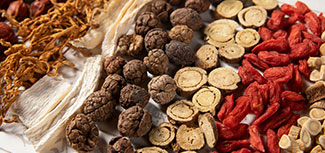Grape Skin Benefits
Author : Naturalin Marketing Dept. Date : Click : times
Introduction
Grape skin contains polyphenol known for its high antioxidant activity. The purple color ofgrape skin is of anthocyanin-family polyphenol, the same family of blueberry, believed to maintaingood eyesight. A growing awareness about Resveratrol as a characteristic component of grapehas caught people's attention.
Resveratrol was discovered in 1940 and reported to be contained in red wine in 1992. It hasbeen enthusiastically studied as its cancer prevention activity was first reported in 1997. Everyyear over 1,000 academic papers are cited about it.
Resveratrol is now believed to perform various activities including life extension by controllingenergy generation, cell division, etc. Increased studies about resveratrol will continue to uncovernew findings.
Oryza Oil&Fat Chemical has released the natural ingredient “Resveratrol” developed byconcentrating resveratrol with the pigment compositions in grape. New data is also available.Please use Resveratrol to maintain your beauty and health.
Chemical Features
Grape and red wine are rich inpolyphenols such as catechin, gallic acid,tannins and anthocyanins (pigment). Resveratrol is contained in grape,cowberry or Polygonum plants, andpresents mainly as trans form in nature(Scheme 1). A glycoside called piceiddissolve in water, and is found in redwine.
Resveratrol-P5 (PC5) is made from grape, being proven by fingerprints (Fig.1). Polyphenols other than resveratrolpresent in it and play an important roletogether with trans-resveratrol.
Anti-oxidation
UV ray is known to cause tan and dark spots and is deeply related to skin’s ageing. It producesreactive oxygen species to make the skin coarse and less elastic. Reactive oxygen species are alsoproduced by stress. This is why stress if often thought of as an archenemy of the skin.
Studies on animals confirmed that resveratrol prevents damage on DNA caused by UV ray,increases the anti-oxidative potency in serum, decreases lipoperoxide (lipids damaged by reactiveoxygen species), and also controls the activity of the inflammation transcription factor NF-кB(chapters 4 and 5).
Resveratrol has been confirmed to perform extremely strong SOD-like activity (Fig. 5) and DPPHradical scavenging activity (Fig. 6) that are indexes of anti-oxidative potency. This indicates thatresveratrol can protect living bodies from reactive oxygen species.
Anti-inflammation
Resveratrol performs its antiinflammatory activity by controlling the action of transcription factor NF-кB. NF-кB is involved in inflammatory reactions and the increase of cancer cells.
Normally, NF-кB is inactivated by a suppressor. However, it is activated when the suppressor is dissociated from NF-кB by an external factor such as UV ray and bacterial infection. Studies have proved that resveratrol inhibits the suppressor dissociation stage (to maintain NF-кB inactivated). Resveratrol seems to control redness, progression of pimples, and itch by inhibiting the production of inflammatory factor.
Anti-bacteria
P. acnes (in vitro)
A test, where resveratrol was added to an agar medium, proved that it controls the multiplication of P.acnes (antibacterial activity) at the concentration of 300 μg/ml or higher (Fig. 12).
Since resveratrol has a strong anti-inflammatory activity, it is expected to control acne and its progression by performing its antibacterial activity as well.
H. pylori (in vitro)
H. pylori is a bacterium considered to cause gastric ulcer and stomach cancer and lives in the stomach. Japanese people have a high H. pylori-carrying rate. Over fifty percent of people in their sixties or older have the bacterium. Prompt elimination is recommended when H. pylori is found.
Resveratrol's antibacterial activity is effective on H. pylori and the effect has been proven by in vitro tests. CLO test is a method to determine the quantity of ammonia produced by H. pylori.
Grape skin contains polyphenol known for its high antioxidant activity. The purple color ofgrape skin is of anthocyanin-family polyphenol, the same family of blueberry, believed to maintaingood eyesight. A growing awareness about Resveratrol as a characteristic component of grapehas caught people's attention.
Resveratrol was discovered in 1940 and reported to be contained in red wine in 1992. It hasbeen enthusiastically studied as its cancer prevention activity was first reported in 1997. Everyyear over 1,000 academic papers are cited about it.
Resveratrol is now believed to perform various activities including life extension by controllingenergy generation, cell division, etc. Increased studies about resveratrol will continue to uncovernew findings.
Oryza Oil&Fat Chemical has released the natural ingredient “Resveratrol” developed byconcentrating resveratrol with the pigment compositions in grape. New data is also available.Please use Resveratrol to maintain your beauty and health.
Chemical Features
Grape and red wine are rich inpolyphenols such as catechin, gallic acid,tannins and anthocyanins (pigment). Resveratrol is contained in grape,cowberry or Polygonum plants, andpresents mainly as trans form in nature(Scheme 1). A glycoside called piceiddissolve in water, and is found in redwine.
Resveratrol-P5 (PC5) is made from grape, being proven by fingerprints (Fig.1). Polyphenols other than resveratrolpresent in it and play an important roletogether with trans-resveratrol.
Anti-oxidation
UV ray is known to cause tan and dark spots and is deeply related to skin’s ageing. It producesreactive oxygen species to make the skin coarse and less elastic. Reactive oxygen species are alsoproduced by stress. This is why stress if often thought of as an archenemy of the skin.
Studies on animals confirmed that resveratrol prevents damage on DNA caused by UV ray,increases the anti-oxidative potency in serum, decreases lipoperoxide (lipids damaged by reactiveoxygen species), and also controls the activity of the inflammation transcription factor NF-кB(chapters 4 and 5).
Resveratrol has been confirmed to perform extremely strong SOD-like activity (Fig. 5) and DPPHradical scavenging activity (Fig. 6) that are indexes of anti-oxidative potency. This indicates thatresveratrol can protect living bodies from reactive oxygen species.
Anti-inflammation
Resveratrol performs its antiinflammatory activity by controlling the action of transcription factor NF-кB. NF-кB is involved in inflammatory reactions and the increase of cancer cells.
Normally, NF-кB is inactivated by a suppressor. However, it is activated when the suppressor is dissociated from NF-кB by an external factor such as UV ray and bacterial infection. Studies have proved that resveratrol inhibits the suppressor dissociation stage (to maintain NF-кB inactivated). Resveratrol seems to control redness, progression of pimples, and itch by inhibiting the production of inflammatory factor.
Anti-bacteria
P. acnes (in vitro)
A test, where resveratrol was added to an agar medium, proved that it controls the multiplication of P.acnes (antibacterial activity) at the concentration of 300 μg/ml or higher (Fig. 12).
Since resveratrol has a strong anti-inflammatory activity, it is expected to control acne and its progression by performing its antibacterial activity as well.
H. pylori (in vitro)
H. pylori is a bacterium considered to cause gastric ulcer and stomach cancer and lives in the stomach. Japanese people have a high H. pylori-carrying rate. Over fifty percent of people in their sixties or older have the bacterium. Prompt elimination is recommended when H. pylori is found.
Resveratrol's antibacterial activity is effective on H. pylori and the effect has been proven by in vitro tests. CLO test is a method to determine the quantity of ammonia produced by H. pylori.
 sales@naturalin.com
sales@naturalin.com +86(731)84430651
+86(731)84430651









 Return list
Return list






